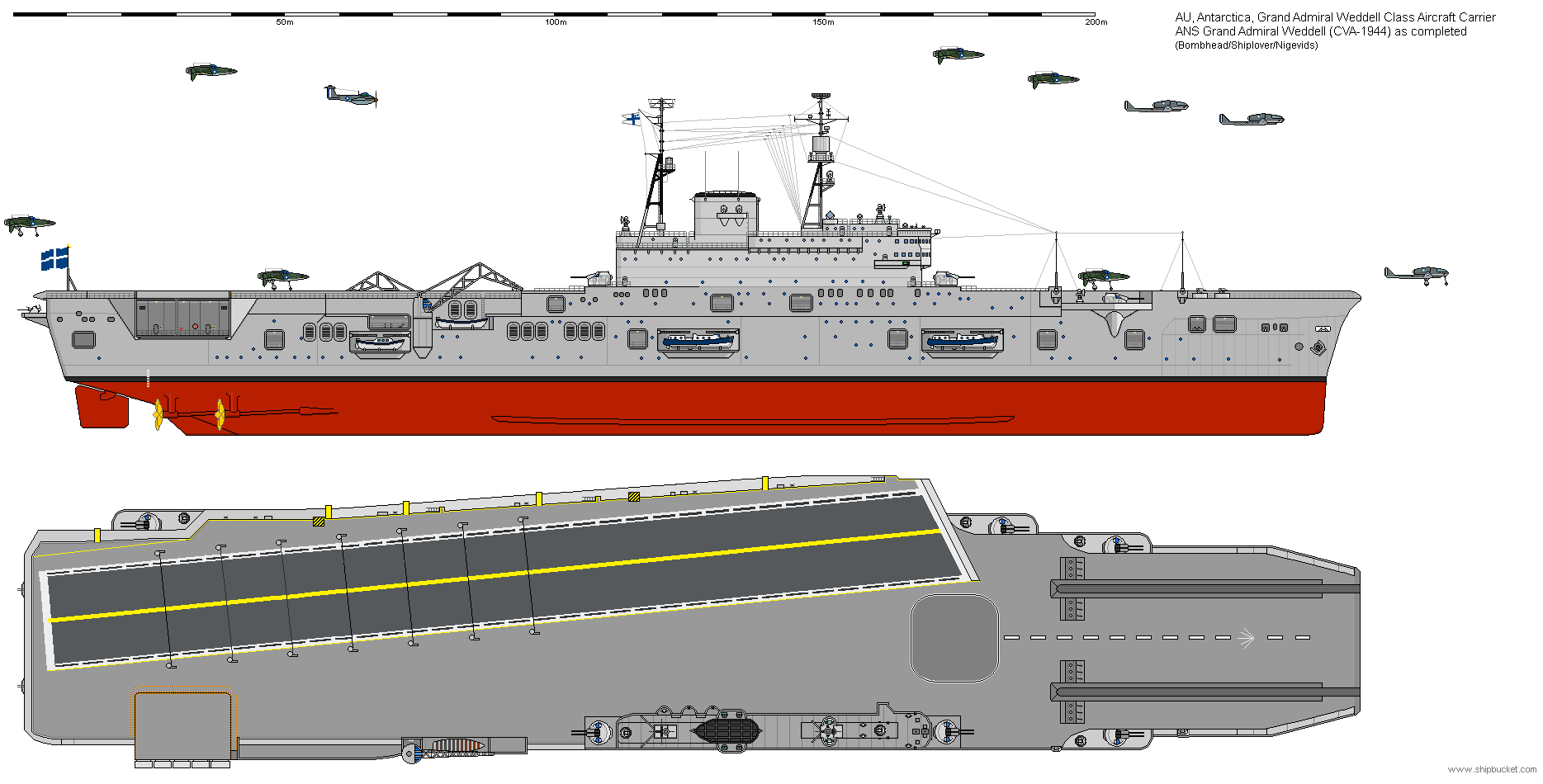The two ships of the Grand Admiral Weddell Class started off as
units five and six of the General Albanon Class. So many changes
were made to the original design that the two ships were made a
separate class. Trials with the first prototype jets for the
Navy showed that a new set of concepts were required for the
construction of any new aircraft carrier construction designed
to handle jets. It was the landing speed of the jets that caused
the biggest problems. The jets needed experienced pilots to get
them anywhere near landing in the correct zones. Many hours were
spent working out how this could be overcome. The end result was
the first 'angled' landing on deck. This would allow a 'bad'
landing to spool up the engine(s) and take off straight ahead on
a clear deck, to go around and try again, rather than
disappearing into the crash net and becoming a write off.

The angled deck was one of many innovations fitted to the
Weddell Class. A new automatic twin 3"/L70 gun system tied to a
full set of radar systems for targeting and delivery. The new
system was much more accurate and delivered a much better knock
down rate. Just the six twin turrets on the Weddell's were
capable of more 'kills' than the 80 odd 40mm on the Albanon
class. The next innovation was the deck edge lift on the
starboard aft quadrant. This replaced the centreline lift that
now had the angle deck running through it. The forward
centreline lift was retained as it served the purpose of
delivering ready aircraft to the catapults for launching. It was
also in the perfect position to strike down aircraft that had
just landed on. The large area between the lifts and the bridge
superstructure was used for a deck park for ready aircraft. This
took away some of the crowding on the hangar deck with so many
flight operations that could be taking place at one time.
The acceptance trials over, the two ships had just three months
to make an impact on the Pacific War.
| Displacement | 37,000 tons standard, 44,000 tons full load |
| Length | 809 ft |
| Breadth | 116 ft hull (142 ft over sponsons) (175 feet over angled deck. |
| Draught | 32 ft |
| Machinery | 4 shaft, steam turbines, 160,000shp |
| Speed | 30 knots |
| Range | 12000 miles at 14 knots |
| Armour | 3" side, 5.5" deck |
| Armament | As completed 12 x 3" auto (6x2) 4 x 40mm (2x2) |
| Aircraft | 78 |
| Complement | 2450/2500 |
| Notes | Grand Admiral Weddell Prime Senator Churchill |
There were a few minor cosmetic differences between the II and
the III series aircraft.
The tailplane was clipped, the wing tips were squared off, but
the major difference was
in the uprated Merlin engine adding 30mph to the top speed. Wing
root hard points for
drop tanks increased the range even more. The armament was
increased in line with
the other aircraft, the four 20mm cannons being replaced with
30mm cannons.
The Whirlwind III was retained on the Weddell class as it had
the speed and range to be
able to escort the torpedo bombers to their target(s) which the
shorter ranged Wasp
was unable to do. It was not until the next generation of jet
aircraft that these problems
would be solved.